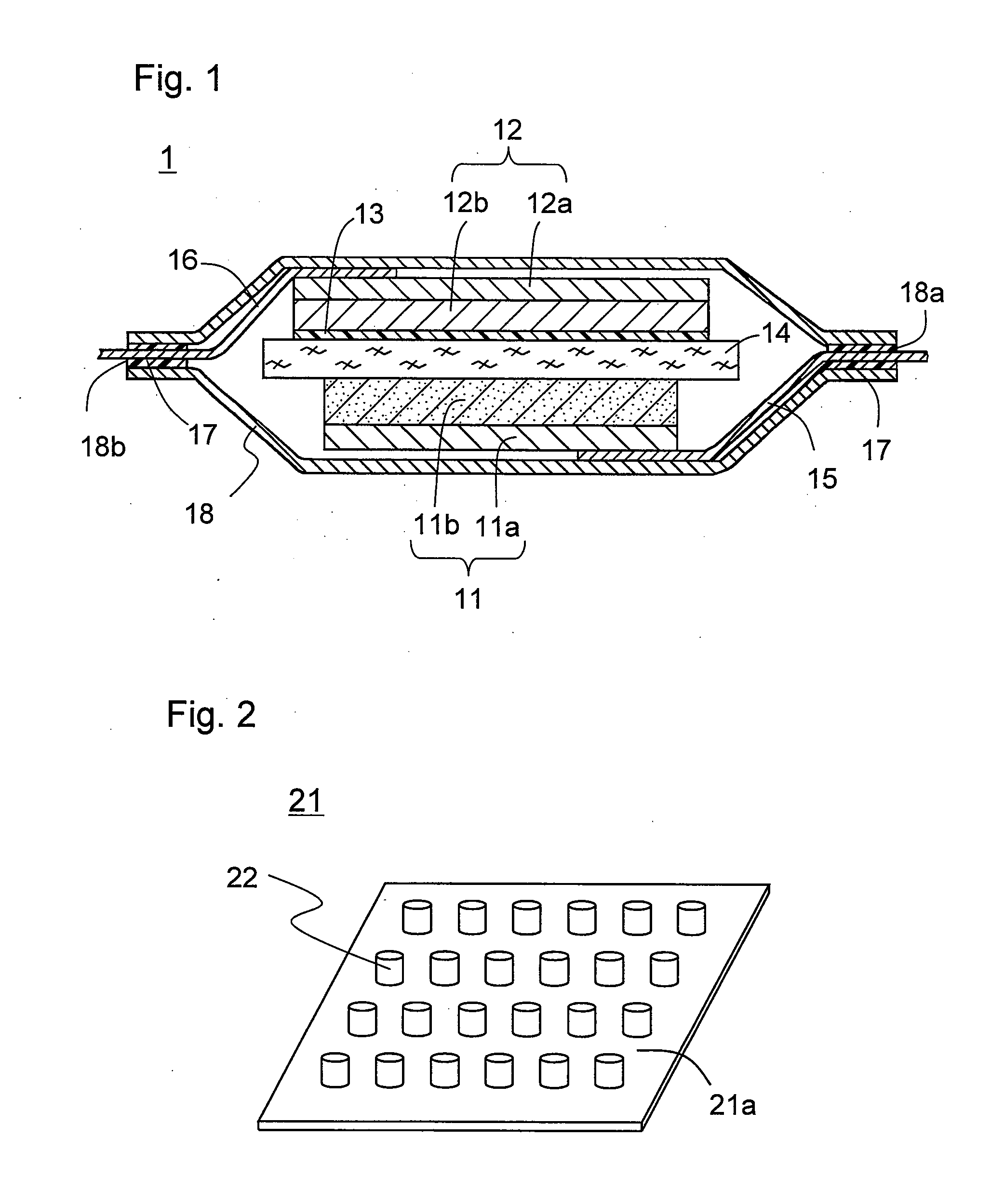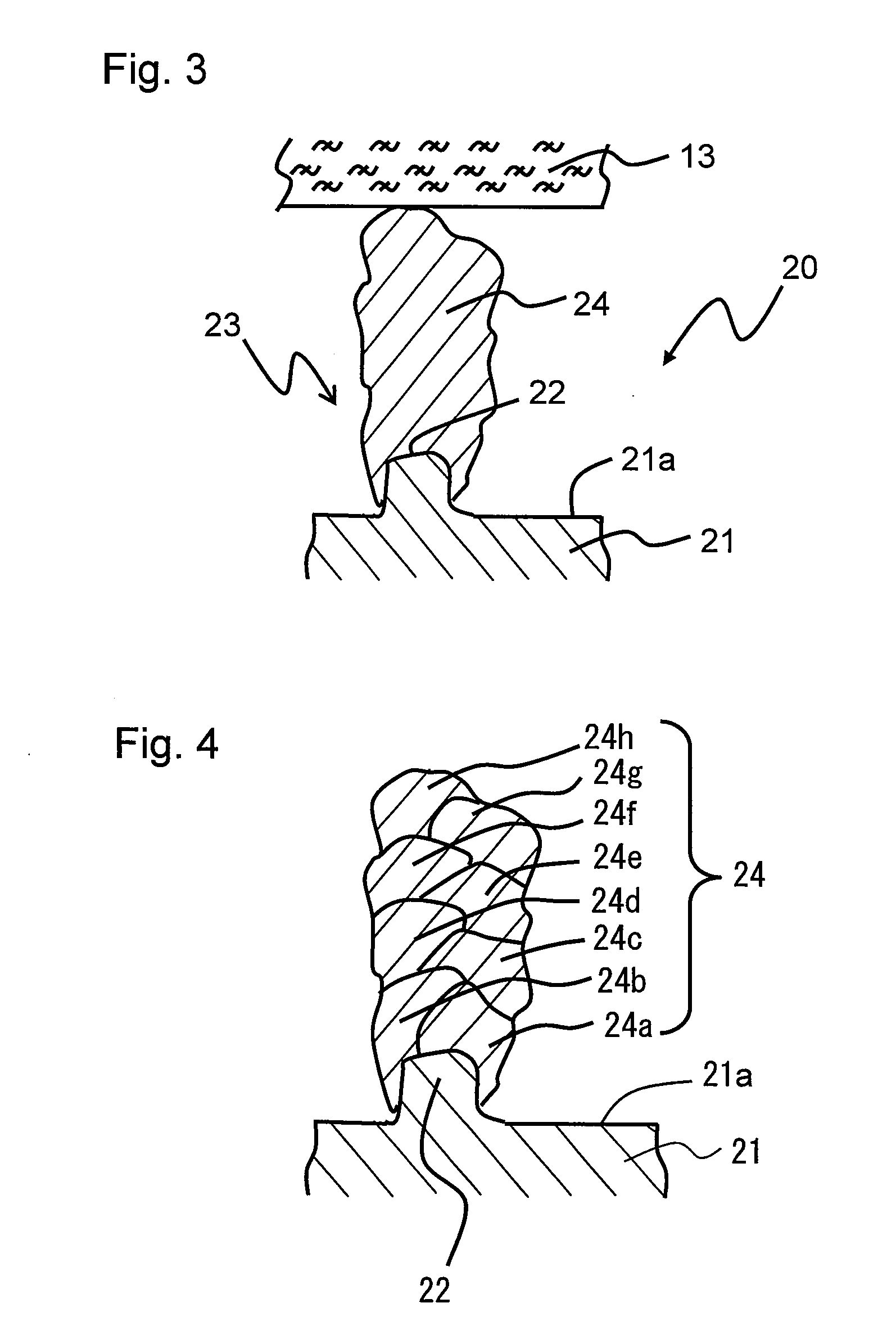Lithium ion secondary battery
a secondary battery and lithium ion technology, applied in the field of lithium ion secondary batteries, can solve the problems of shortened service life of the electrode, large stress, and cracks on the surface or inside the active material layer of the negative electrode, and achieve excellent battery performance and long service li
- Summary
- Abstract
- Description
- Claims
- Application Information
AI Technical Summary
Benefits of technology
Problems solved by technology
Method used
Image
Examples
example 1
(1) Preparation of Positive Electrode Active Material
[0163]To an aqueous NiSO4 solution, cobalt sulfate was added such that Ni:Co=8.5:1.5 (molar ratio), to prepare an aqueous solution having a metal ion concentration of 2 mol / L. To the resultant aqueous solution, a 2 mol / L sodium hydroxide solution was gradually added dropwise to neutralize the aqueous solution, whereby a ternary precipitate represented by Ni0.85CO0.15(OH)2 was produced by coprecipitation. The precipitate was collected by filtration, washed with water, and dried at 80° C., to give a composite hydroxide.
[0164]This composite hydroxide was heated at 900° C. in air for 10 hours, to give a composite oxide represented by Ni0.85CO0.15O. Subsequently, the composite oxide was mixed with a monohydrate of lithium hydroxide such that the total number of Ni and Co atoms became equal to the number of Li atoms, and heated at 800° C. in air for 10 hours, to give a lithium-nickel-containing composite oxide represented by LiNi0.85Co0...
example 2
[0183]The lithium ion secondary battery of the present invention was fabricated in the same manner as Example 1, except that the negative electrode was produced in the following manner.
[Production of Negative Electrode]
[0184]On the surface of an iron roller having a diameter of 50 mm, chromic oxide was flame sprayed to form a ceramic layer having a thickness of 100 μm. On the surface of the ceramic layer thus formed, holes being circular depressions each having a diameter of 12 μm and a depth of 8 μm were formed by laser machining, whereby a projection-forming roller was produced. These holes were arranged in a close-packed pattern, with an axis-to-axis distance between a pair of adjacent holes being 20 μm. The bottom of these holes was substantially planar at its center, and the edge where the bottom meets the side was round.
[0185]An alloy copper foil (trade name: HCL-02Z, thickness: 20 μm, available from Hitachi Cable) containing 0.03% by weight of zirconia to the total amount was...
example 3
[0196]The lithium ion secondary battery of the present invention was fabricated in the same manner as Example 1, except that the support salt (LiPF6) was not added to the ion-permeable resin layer.
PUM
| Property | Measurement | Unit |
|---|---|---|
| thickness | aaaaa | aaaaa |
| surface roughness | aaaaa | aaaaa |
| distance | aaaaa | aaaaa |
Abstract
Description
Claims
Application Information
 Login to View More
Login to View More - R&D
- Intellectual Property
- Life Sciences
- Materials
- Tech Scout
- Unparalleled Data Quality
- Higher Quality Content
- 60% Fewer Hallucinations
Browse by: Latest US Patents, China's latest patents, Technical Efficacy Thesaurus, Application Domain, Technology Topic, Popular Technical Reports.
© 2025 PatSnap. All rights reserved.Legal|Privacy policy|Modern Slavery Act Transparency Statement|Sitemap|About US| Contact US: help@patsnap.com



